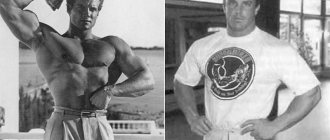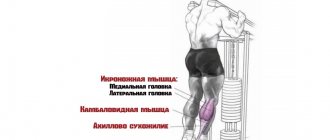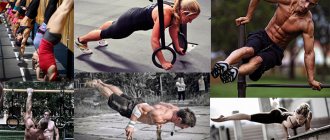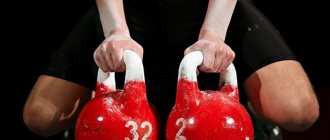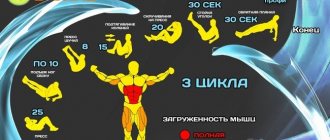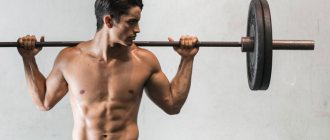The benefits and harms of this sport
Arm wrestling will strengthen your joints, and the stiffness of the ligaments decides who wins the fight. Your hand will have a real iron grip. In this sport, many exercises are aimed at developing grip strength. Gripping fingers will improve your climbing skills. It will be easier for you to carry heavy objects (lifting furniture to the fifth floor).
Arm wrestlers win thanks to correct technique and explosive muscle power. Those athletes who manage to react in time to the judge’s command immediately find themselves in an advantageous position, so the reaction speed of arm wrestlers is crucial.
By practicing arm wrestling, you will increase your speed, explosiveness and reaction speed. Arm wrestling will strengthen your character, you will be able to endure and not give up in difficult times.
During a fight, the wrists, elbows and shoulders, ligaments and muscles of the hands experience colossal overloads. The most common injuries in arm wrestling:
- Shoulder muscle avulsions and tears.
- Sprains and tears of the elbow and shoulder ligaments and injuries to these joints.
- Fractures of the humerus.
Arm wrestling is a very traumatic sport, so before you start wrestling on your arms, strengthen them with regular training and special isometric exercises for 1-2 months. To avoid injuries, devote most of your training, especially at the initial stage, to strength training and strengthening of ligaments, regimen and proper nutrition. And sparring with a partner should be done no more than once a week.
Specifics of arm wrestling training
Yes, dimensions do not play a big role here. This is what experts say. What is important? A successful arm wrestler is an athlete who has:
By force.
If we talk about strength, then the key role in martial arts is played not by the size of the pumped up muscles, but by the ligaments. Experienced arm wrestlers know: arm wrestling is a sport of strong muscles. An ordinary bodybuilder with a mountain of muscles is unlikely to become successful in this field. There is a genetic predisposition to strong ligaments, but they can also be trained. Although it will take more time. And armwrestlers devote a lot of time to their muscles. The goal is not to build muscle, but to add strength so that a grip of steel appears.
Speed.
An armwrestler must have a quick reaction. The key stage of arm wrestling is not the final stage, when the stronger opponent pins the opponent's hand to the table. And the first seconds after the “go” command. A successful start usually leads to victory. The starting reaction is what else training should focus on.
Endurance.
Athletes hold tense arms in one position for a long time. One of the longest fights lasted 18 minutes. Try holding the angle with your biceps without preparation. Therefore, in the arm wrestling training process, time is devoted to general physical training of the muscles of the chest, back and legs.
Tactical thinking.
There is strength - no need for intelligence - this is not about arm wrestlers. Tactics are no less important here than in chess. Probe, feel the opponent, understand his weak points, not give away your own, choose the right technique.
All of the above factors influence the organization of training for arm wrestlers. What makes them special?
- An athlete must have a foundation in the form of general physical training. We start with pull-ups, push-ups, including parallel bars, and crunches. The next step is the base. During the fight, the whole body is tense. It should all be pumped up. And only after several months of working on yourself, when the muscle-joint system becomes stronger, can you confidently move on to special training. But people often come to armwrestling from kettlebell lifting and powerlifting. If this is so, then you are already ready for arm wrestling;
- In training we use weights and rubber that simulates the resistance of an opponent;
- We focus on the hands and fingers. The specifics of the sport transform the usual exercises: if push-ups and pull-ups are done - then on the fingers, if lat pull-downs - then with the movement of the hand;
- During the exercises, we alternate dynamics with statics, full and limited range of movements. This is necessary in order to withstand long-term tension during the tournament;
- We spar to gain experience in wrestling.
Are you convinced that an arm wrestler must be a harmoniously developed athlete? When the body is muscular, the arms are strong, the grip is tenacious, there is fortitude, passion and the desire to win, then success will definitely come.
Contraindications
Arm wrestling training is aimed primarily at strengthening the arms and hands, both muscles and joint-ligamentous apparatus. If you experience pain during exercise, you should stop immediately. Do not engage in arm wrestling if you have injuries to the shoulder, elbow and wrist joints, or if you have chronic and inflammatory diseases of the joints of the hands (arthritis, arthrosis, dislocations, torn ligaments).
Be careful when exercising if you have high blood pressure or heart disease, or better yet, consult your doctor first.
Do not exercise if you are poisoned or sick - such training will not lead to anything good. First, you need to undergo proper treatment and fully recover, and only then start training.
Arm wrestling technique
Hook wrestling
Before starting, press your shoulder and elbow tightly to your chest. At the referee's command, immediately bend your hand with your palm facing you and pull your forearm towards you, reducing the angle at the elbow joint. If you managed to do all this, feel free to take down your opponent, he is at a disadvantage. Throughout the movement, keep your elbow tight to your body and fight with your whole body, not just your arm. This method is popular among competitors with developed biceps.
To prevent themselves from being overcome by a hook technique, athletes strengthen their wrists to effectively resist bending of the wrist. And they pull their arm towards themselves, trying to increase the angle at the opponent’s elbow joint.
Overhead fighting system
In this method, you need to bend your opponent's wrist so that your hand is higher. Extend the fingers on your opponent's hand, bring your wrist higher and take your opponent down. This method is more often used by athletes who have long forearm.
Often, when wrestling over the top in competitions, the grip breaks, in order to prevent this situation from happening again, the judges tie the opponents’ hands with a belt.
Fighting sideways
The athlete strives, without changing the angle, to put the opponent down with a lateral force, while the role of the fingers is almost completely absent. When wrestling to the side, the strength and speed of the athlete play a decisive role. This method is used with tied hands. It is important when starting to not let your opponent twist your wrist.
Professional athletes must master all these techniques and be able to effectively resist them; for this they need to strengthen:
- Fingers and wrist.
- Forearm.
- Biceps.
- Upper back.
- It is imperative to improve the antagonist muscles - triceps, pectoral and deltoids.
Particular attention should be paid to strengthening the ligaments, for this you need to use exercises using isometric tension (holding a load with your fingers, hanging on a bar with bent arms, holding a heavy dumbbell on your biceps).
Exercises that arm wrestlers use to prepare
- The standing biceps curl is an effective exercise that develops the biceps, back and forearms. Do not perform the lift in full amplitude - try not to extend your arm more than 1200. To strengthen your forearm, do this movement with a thick bar, or put elastic bands on the bar to increase its diameter.
- Lifting the barbell onto the wrist - take the barbell, place your forearms on the bench, palms facing up, bend your hands towards you, lifting the barbell. The exercise can be performed with one hand and using a long barbell, this will additionally load the pronator and supinator muscles.
- Lifting a kettlebell with a hand with two hands - put your forearms on the bench and take the kettlebell, palms facing each other, thumb facing up, lift the kettlebell by bending and straightening your wrist.
- Deadlifts using a hook or overhead pull-down can be performed both on an arm wrestling table and while standing. The movement repeats that performed during wrestling. We take the handle and pull it to the chest. The arm remains tense throughout the entire exercise, keeping the elbow pressed to the body. It is advisable to use a large diameter handle of the exercise machine to strengthen grip strength (arm wrestler’s handle).
- Dumbbell lift for the brachioradialis muscle on the Scott bench. We take a dumbbell with a hammer grip and perform lifts, extending the arm in incomplete amplitude no more than 1000 - 1200 at the lowest point. You can use a lower block for this exercise.
- Work out the wrist and biceps with a rubber band or resistance band, using different angles and simulating wrestling.
- Training pronation (twisting the hand with the thumb towards you) and supination on a block using a strap.
- Holding large weights with your fingers, and lifting with your fingers.
- Hold a dumbbell on the biceps with a right angle at the elbow joint.
- Pull-ups – This exercise will strengthen not only your biceps, but also your latissimus dorsi muscles. For arm wrestling, it is useful to perform explosive pull-ups not at full amplitude, when at the top point the palms come off the bar, and at the bottom point the elbows do not straighten completely.
- Hanging on the bar with bent arms with a right angle at the elbow joint.
Exercises for the shoulder girdle:
- Standing barbell and dumbbell presses.
- Swing dumbbells through the sides.
- Dumbbell swings for the rear deltoid.
Barbell presses, bench presses and dips are needed to strengthen the triceps, chest and deltoid muscles; these movements are basic and contribute to the production of testosterone, which is needed to increase muscle mass. Barbell squats and deadlifts are good for these purposes. Performing these exercises once a week will help you quickly build arm muscles and increase strength.
Once a week you need to spar with a partner to practice the correct technique. Beginners should spar once every two weeks. See the video below for an example of a workout.
Exercise No. 1 – Horizontal or block row
Row in a horizontal block
Row in a horizontal block is Denis Tsyplenkov’s favorite exercise for arm wrestling. He admits that he includes it in almost every workout. However, there are certain implementation specifics here.
- Stand up to the simulator;
- Grasp the handle;
- Resting your elbow - your hand, table or side, it doesn’t matter;
- Start by twisting the brush;
- Then change hands and repeat the exercise.
Now let's look at the nuances of performing this arm wrestling exercise. The first thing to consider is the elbow support; for this you can use a table or put your free hand under it. You need to do it at least 20 times in three approaches, and this is just the beginning, then the number of repetitions, working weight and approaches should be increased in order to develop powerful forearm muscles.
Home workout example
For home exercises, we will need a horizontal bar, kettlebell, dumbbell, expander, or any weight and an old towel.
We perform three sets of pull-ups for the maximum number of repetitions.
We carry out lifting loads with a towel:
- Lifting a weight from the floor onto a 4x10 hook.
- Lifting a weight from the floor to the top 4x10.
- Practicing bending the hand towards yourself 4x10-12.
- Practicing pronation and supination 4x10-12.
Exercises on the horizontal bar:
- Reverse grip pull-ups 3 sets max.
- Hanging on the bar with an angle at the elbow joint of 900 – 3 approaches for each arm.
Hold the kettlebell with your fingers for 3 sets.
Push-ups 3 sets for maximum reps.
Exercise No. 3 – Pull-up on the bar
Pull-ups on the bar
You can strengthen your grip not only by training on simulators, but also by using your own weight. Accessibility and simplicity allows everyone to do this arm wrestling exercise at home. Thus, not only the grip is worked out, but also the latissimus dorsi muscles, which also take part during the fight. You can vary:
- Width and type of grip;
- Execution speed;
- Add weights;
- Number of repetitions and approaches;
- Rest intervals during a set.
The arm wrestling exercise works well on almost all the muscles of the upper part - arms, back and abs.
Remember! Having learned how to do pull-ups with your own weight, you need to start training your muscles with weights.
An example of upper training in the gym
- Bench press 4x12.
- Standing biceps curl 4x10.
- Wrist curl with barbell 4x10-12.
- Pull-ups with partial amplitude and a jerk at the top point, 4 sets to the maximum.
- Imitation of wrestling in a hook on a block while standing 4x10-12.
- Performing pronation on a block using a 4x10-12 strap.
- Practicing supination on a block with a 4x10-12 strap.
- Lifting a load with an armlifting handle or holding the load with your fingers for 3 approaches to the maximum.
- Triceps on the upper block 4x12.
Exercise No. 4 – Biceps with barbell
In arm wrestling, the biceps are used more than the triceps, which is why a lot of emphasis is placed on them during training. Biceps curls with a barbell are done with an overhand and underhand grip position. In the first case, not only the flexor of the arm will be worked, but also the upper part of the forearm, which plays a huge role in pulling the opponent during a fight. If bodybuilders try to do arm curls in isolation, then training for arm wrestling involves heavy working weights using “cheating”.
Important! It is necessary to vary the exercise, performing it not only with a barbell, but also with dumbbells and kettlebells.
Training the biceps and forearm with the “hammer” exercise with dumbbells is also actively practiced in arm wrestling, as one of the options for bending the arms.
Sets and reps
I gave an example of a training scheme for beginners; during training, you can use a different number of repetitions in a set from 15 to 2. Most of the time you need to perform movements in the range of 8-12 repetitions. Select the weight of the weights so that you can do an average of 10 repetitions until failure.
If you do 3 workouts a week, do one of them according to the scheme 15 - 12 - 8 - 6 - 4 repetitions, adding weight in each approach. Exercises should not be done to failure in order to reach the maximum in the last approach. Do this type of training no more than once a week.
If you just want to arm wrestle well, just include a few arm wrestling exercises in your bodybuilding workout once a week.
Additional exercises for the forearms
Pull-ups with a towel
For this exercise we will need two small towels. We throw the towels over the bar, the distance between them should correspond to the width of the shoulders, and the fragments hanging from the horizontal bar should be equal. We grab these hanging areas so that the palm surfaces of the hands look at each other, and the thumbs, if extended, point upward. And we perform pull-ups, with which we will not only work the biceps and lats, but also develop tenacity and increase the strength of the hands.
Forearm flexion
I'm sure you're familiar with this exercise, so we won't go into too much detail. You can take dumbbells or a barbell, but perhaps the “Heavy Handle Dumbbell” apparatus is best suited for this exercise. Make sure the length of the machine is adjusted to suit your range of motion. In the first approach, perform the movements in full, and in the next, add weight and limit the amplitude to the central 3/5 of the maximum range of movements.
Power wrist curls
This exercise is performed in the same way as regular wrist curls, with only one exception - we limit the amplitude of movements to the upper sector. In other words, you start the exercise with the wrist joint straightened (without hyperextension) and bend the hand until it is fully contracted. The photo shows world arm wrestling champion Steve Phipps performing this exercise with a weight of 163 kilograms.
Common mistakes
It is dangerous to fight on a long or too short table; use only special tables for arm wrestling. Athletes must stand opposite each other on opposite sides of the table; only in this position can they fight.
A common mistake that causes injuries, and even fractures, is turning the head and body away from the fighting hand. It is necessary to look at the fight, and the body should be turned towards the hand.
Keep your body near the table, and press your elbow closer to your body, keeping sharp angles, this will make it easier to fight. The elbow should not be allowed to move too far away from the body; fully straightening the arm can lead to shoulder injury. Try to keep your forearm and shoulder in line.
Ripping your arm off the armrest can cause injury to your elbow; try to keep your elbow in place.
Correct positioning of the legs during a fight is very important; the front leg in front rests on the crossbar, which runs from the bottom in the middle of the table. The hind leg is set back.
What is an arm wrestling table?
Since this article is devoted not just to physical training, but to arm wrestling training, you need to know about the rules of this sport and equipment. We will answer the first question later, but now we will say a few words about the table. Of course, you can fight with your comrades on any flat surface. If you want to engage in arm wrestling seriously, you will need a special table, which you can easily make yourself.
Now it is time to adopt a unified standard for arm wrestling tables, which are used for competitions between men and women. In addition, there are tables for holding fights in standing and sitting positions. Since a single standard has been approved, all table sizes are strictly regulated. We will not dwell on all these figures now, since they can easily be found on the Internet.
If you decide to purchase a professional table, now this sports equipment is produced by a large number of companies and the minimum cost of a table is on average 10 thousand rubles. When choosing a table, pay special attention to the materials from which the armrests and pillows are made. If the material turns out to be of poor quality, then you will have to frequently re-tighten these elements, which is quite troublesome.
If you decide to make a table yourself, then there is nothing complicated in its design. In essence, it is a simple table with certain dimensions. The main condition here is high stability so that the equipment can withstand the load. On the horizontal surface of the table there are pins for gripping with the hand free from the fight, as well as armrests with pillows for the working hands of opponents. We also recommend that you clearly mark the center line for the convenience of conducting fights. On the Internet you can easily find drawings of an arm wrestling table and you will see that its design is very simple.
